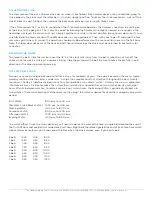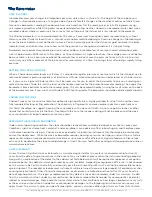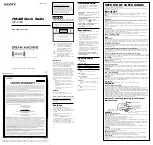
Two Hundred Eighty Four Everett Avenue, Chelsea, Massachusetts 02150-1515 | Tel 617 884-0250 | chelseaclock.com
adJuStInG tHE tonE
The clear resonant tone of a Chelsea clock occurs when its controlled strike hammer drops onto a coiled steel gong. To
strike properly, the clock must therefore be in its natural upright position. To access the strike mechanism, wait until the
clock strikes the next full hour, then remove the back cover plate by unscrewing its three screws.
If the chime sounds ‘flat,” or fails to sound when the strike mechanism operates, the hammer’s head may be resting on,
or too close to, the gong coil. This is easy to correct by bending the hammer wire slightly upward, just enough so the
head does not touch the coil when at rest. Simply hold the wire while in the rest position (do
not
press down on it), and
carefully bend the hammer end with needle nose pliers or any rigid object. Then, with your finger lift and drop the ham-
mer wire again to hear its sound. This operation should only be performed on the
hour
position,
never
on the half hour.
Note: If striking does not occur at the hour and half-hour dial markings the clock must be returned to our factory for
correction
SIlEncInG tHE cHIME
To silence the bells, slide the small pin near the “8” on the clock’s dial away from the bell symbol. Do
not
turn off the
chime while the clock is striking. To resume striking, slide the pin toward the bell. Be sure to move the pin fully in one
direction or the other to prevent jamming.
tHE SHIP’S BEll codE
Mariners have used a unique bell code to tell time at sea for hundreds of years. The code is based on the crew’s typical
workday routine while the vessel is under way. A ship at sea requires constant attention throughout the day’s twenty-
four hours. The day is therefore divided into six four-hour periods, each called a “watch.” Similarly, the crew is segmented
into three divisions. Division members then stand their individually assigned duties on two watches per day, with eight
hours off duty between watches. To rotate each division’s watch times, the Evening Watch is periodically divided into
two watches. These are called Dog Watches because they “dog” the watch schedule for all divisions ahead by one watch
period.
First Watch
8:00 p.m. to 12:00 a.m.
Mid-Watch (also Black Watch) 12:00 a.m. to 4:00 a.m.
Morning Watch
4:00 a.m. to 8:00 a.m.
Forenoon Watch
8:00 a.m. to 12:00 p.m.
Afternoon Watch
12:00 p.m. to 4:00 p.m.
Evening Watch
4:00 p.m. to 8:00 p.m.
The watch officer struck the ship’s bell every half hour to apprise the crew of the time. A single bell denoted the end of
the first half hour and one bell was added each half-hour. Eight bells therefore signaled the end of each four-hour watch.
Like centuries of seafarers, you’ll soon know the time when the clock chimes, even if you can’t see it.
8 bells
12:00
4:00
8:00
1 bell
12:30
4:30
8:30
2 bells
1:00
5:00
9:00
3 bells
1:30
5:30
9:30
4 bells
2:00
6:00
10:00
5 bells
2:30
6:30
10:30
6 bells
3:00
7:00
11:00
7 bells
3:30
7:30
11:30





















